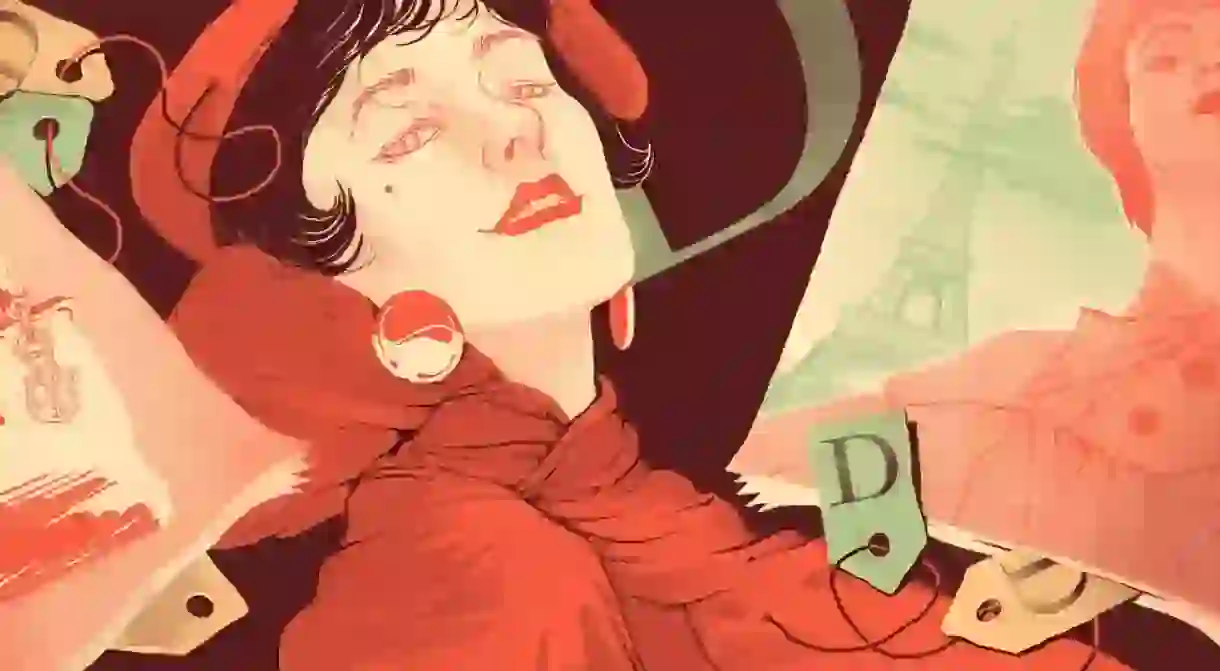The History of the House of Dior

Christian Dior founded his namesake label in Paris in 1947 and it has since seen some of the most influential names in fashion take to the helm. Culture Trip explores the history of the illustrious fashion house.
Couture fashion design, accessories, perfume and beauty products define the House of Dior today, but when Christian Dior launched his label in 1947 he had one focus: to redefine the way that women dressed. The names that have succeeded him as artistic and creative directors read like a who’s who of industry pioneers, and each appointment has brought with it a new era and aesthetic.
On the 12 February 1947, Christian Dior, who trained under legendary designers Robert Piguet and Lucien Lelong, presented an impressive 90-piece collection to magazine editors at his Parisian townhouse on Avenue Montaigne. Appropriately titled ‘New Look’, it was a response to the end of rationing and the war. Silhouettes were structured, waists defined, skirts full bodied and dresses were made using (on average) 20 yards of fabric – an indulgent approach compared to that taken during World War II. Dior was an overnight success.

Female empowerment triumphed within Dior’s work and when he launched his first fragrance in 1947 it was his sister – a member of the French Resistance and a survivor of the Ravensbrück concentration camp – who he named it after. In 1950, the designer famously created every look for actress Marlene Dietrich in the Alfred Hitchcock film Stage Fright. The Dietrich looks were representative of the label’s signature style and included precision tailoring nipped at the waist, voluminous capes and dome-shaped skirts designed to skim the calf. In the same year, Dior released his first book, Je Suis Couturier, and famously said: “I wanted to be an architect. Being a couturier meant that I still needed to abide by the rules of architecture.”
In 1957, Dior died of a heart attack, but not before he became the first French couturier to make the cover of Time magazine. Dior’s senior assistant – a 21-year-old budding designer called Yves Saint Laurent – took the helm.
Saint Laurent propelled Dior in a new and unexpected direction. His first collection, the ligne Trapèze (trapeze line), left the cinched waist behind and presented oversized A-line silhouettes that hid instead of showcased the female form. When Saint Laurent got called up to Algerian war of Independence in 1960, the cognoscenti welcomed his successor Marc Bohan with open arms. Famed for a refined and elegant sensibility, his appointment restored the fashion house’s feminine reputation.
Between the years of 1967 and 1975, the label exploded in size: ready-to-wear collections were introduced, the first Baby Dior store was opened in Paris and Christian Dior Homme was successfully launched. Stores opened in London, New York and Hong Kong and by the time Gianfranco Ferré took over as stylistic director in 1989, Bohan could pass on not just a globally recognised fashion house but a large pair of shoes to fill as well.
Ferré rose to the challenge and soon the Dior couture and ready-to-wear lines were strong enough in their own right to achieve separate recognition. The original line was renamed Christian Dior Couture.

John Galliano was next in line to lead the label and in 1996 he immediately made headlines when Princess Diana wore the first couture dress he designed. Also on his list of accolades was the launch of the now-signature saddlebags which became a perennial favourite. Shamelessly branded with a repeat logo motif and crafted to a distinctive shape with a small shoulder strap, the bag was picked up by the likes of early-noughties style icons Sarah Jessica Parker, Sienna Miller and Mischa Barton.
There was a controversial side to his approach; his collections were theatrical and often more artistic than they were wearable. He worked with photographer Nick Knight to create bold, statement-making campaigns with a sexual, sometimes punk-inspired twist. Despite his brilliance, Galliano left the label under a cloud after being fired for making anti-semitic statements in a video taken on a drunken night out.
Perhaps in response to this, his successor Raf Simons made a point of differentiating himself to Galliano from the day of his appointment as artistic director in 2012. Equally as brilliant but noticeably more understated, Simons’s collections were wearable while the runway shows brought drama. His artful, often tactile, collections attracted a celebrity-peppered front row that included Jennifer Lawrence and Rihanna.

When Simons left the label there was much discussion around who should take over. Speculation surrounded Givenchy’s Riccardo Tisci (now creative director at Burberry) and Céline’s Phoebe Philo. It was Maria Grazia Chiuri, the former Valentino co-creative director who became the first female to head up the label in 2016, and she still holds the position today.
“I’m not here because I’m a woman but because I’m good at what I do,” Chiuri told Vogue backstage at her spring/summer 2018 runway show, which featured the now-famous ‘We Should All Be Feminists’ T-shirt. Her approach is literal, unapologetic and streetwear-inspired but looks are equally as confident as the original hourglass silhouettes coined by the founder.
Chiuri proves that Christian Dior’s initial message – one of female empowerment – lives on some 70 years later, now designed to resonate with the modern woman.
You may also like: This Is Why Christian Dior Deserves an Exhibit as Big as Alexander McQueen’s













